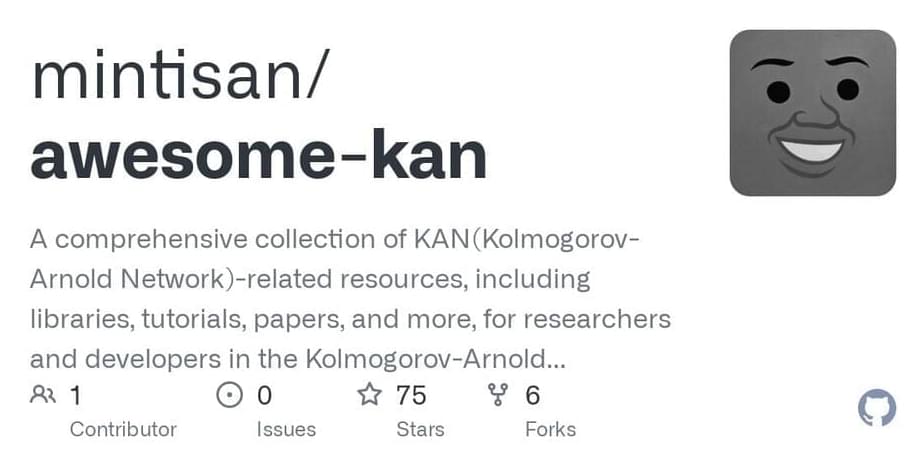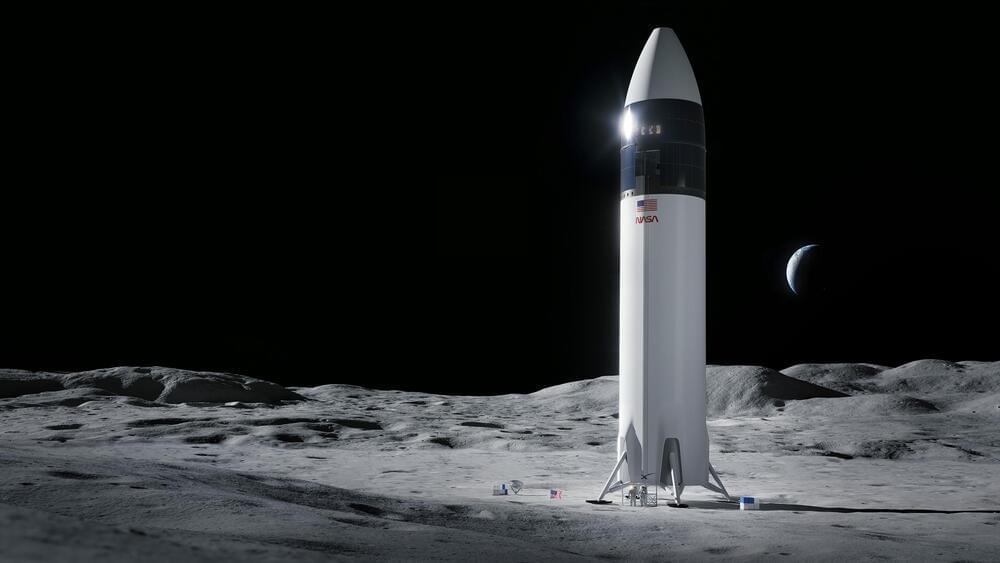Page 6
May 8, 2024
Military Artificial Intelligence, the People’s Liberation Army, and U.S.-China Strategic Competition
Posted by Dan Breeden in categories: military, robotics/AI
May 8, 2024
Could cannabis treat cancer someday? Here’s what the science says so far
Posted by Paul Battista in categories: biotech/medical, science
For decades, cannabis has been studied for its potential antitumor properties, but whether it can actually treat cancer is still unknown.
May 8, 2024
Mintisan/awesome-kan: A comprehensive collection of KAN(Kolmogorov-Arnold Network)-related resources, including libraries, tutorials, papers, and more, for researchers and developers in the Kolmogorov-Arnold Network field
Posted by Cecile G. Tamura in category: futurism

A curated list of awesome libraries, tutorials, papers, and other resources related to Kolmogorov-Arnold Network (KAN). This repository aims to be a comprehensive and organized collection that will help researchers and developers in the world of KAN!
A comprehensive collection of KAN(Kolmogorov-Arnold Network)-related resources, including libraries, tutorials, papers, and more, for researchers and developers in the Kolmogorov-Arnold Network field.
May 8, 2024
Ozone Dynamics on Proxima Centauri b: A Key to Habitability
Posted by Laurence Tognetti, Labroots Inc. in categories: chemistry, climatology, computing, space
How can studying an exoplanet’s ozone help astronomers better understand its habitability potential? This is what a recent study published in the Monthly Notices of the Royal Astronomical Society hopes to address as a team of international researchers investigated how an ozone on the nearest exoplanet to Earth, Proxima Centauri b, could influence its own climate over time. This study holds the potential to help astronomers better understand how an exoplanet’s ozone could influence its formation, evolution, and potential habitability, and could have implications on how astronomers study Earth-like exoplanets throughout the cosmos.
“Imagine a world where ozone affects temperature and wind speed and holds the key to a planet’s very habitability,” said Dr. Assaf Hochman, who is a senior lecturer in the Institute of Earth Sciences at the Hebrew University of Jerusalem and a co-author on the study. “Our study unveils this intricate connection and underscores the importance of considering interactive ozone and other photochemical species in our quest to understand Earth-like exoplanets.”
For the study, the researchers used a series of computer simulations to ascertain how an active ozone on Proxima Centauri b could influence the exoplanet’s climate and potential habitability. In the end, the researchers discovered that an ozone layer on Proxima Centauri b could greatly influence the temperature and wind circulation patterns throughout its atmosphere. Additionally, they also found altitude also played a high role in the atmospheric temperature and temperature variances, as well. The researchers emphasized how these findings could help future researchers better understand the potential habitability of an exoplanet, noting how a potential ozone layer on Proxima Centauri b could greatly influence its climate.
May 8, 2024
Tornadoes Are Coming in Bunches. Scientists Are Trying to Figure Out Why
Posted by Dan Breeden in category: climatology
The number of tornadoes so far in the United States this year is just above average. But their distribution is changing.
May 8, 2024
Bye-bye bots: Altera’s game-playing AI agents get backing from Eric Schmidt
Posted by Cecile G. Tamura in categories: entertainment, robotics/AI
Autonomous, AI-based players are coming to a gaming experience near you, and a new startup, Altera, is joining the fray to build this new guard of AI agents.
The company announced Wednesday that it raised $9 million in an oversubscribed seed round, co-led by First Spark Ventures (Eric Schmidt’s deep-tech fund) and Patron (the seed stage fund co-founded by Riot Games alums).
The funding follows Altera’s previous raising a pre-seed $2 million from a16z SPEEDRUN and others in January of this year. Now, Altera wants to use the new capital to hire more scientists, engineers, and team members to help with product development and growth.
May 8, 2024
Wind-up nanotechnology
Posted by Michael LaTorra in categories: biotech/medical, nanotechnology
Carbon nanotubes are one of the most elastically strong materials out there.
When I was a kid, I used to take allowance money and occasionally buy rubber-band-powered balsa wood airplanes at a local store. Maybe you’ve seen these. You wind up the rubber band, which stretches the elastomer and stores energy in the elastic strain of the polymer, as in Hooke’s Law (though I suspect the rubber band goes well beyond the linear regime when it’s really wound up, because of the higher order twisting that happens). Rhett Alain wrote about how well you can store energy like this. It turns out that the stored energy per mass of the rubber band can get pretty substantial.
Carbon nanotubes are one of the most elastically strong materials out there. A bit over a decade ago, a group at Michigan State did a serious theoretical analysis of how much energy you could store in a twisted yarn made from single-walled carbon nanotubes. They found that the specific energy storage could get as large as several MJ/kg, as much as four times what you get with lithium ion batteries!
May 8, 2024
SpaceX’s new spacesuit has a futuristic head-up display
Posted by Genevieve Klien in category: space travel

The newest SpaceX spacesuit has increased mobility, a slimmer design, and even features a head-up display in the helmet.
May 8, 2024
Physicists reach atomic-scale telegraphy with light
Posted by Genevieve Klien in categories: computing, quantum physics
“They just have to stay underneath the tip until the light field changes its direction to be able to return.” By looking at an atomically thin insulator—a material that resists electrons spreading—the physicists got a first glimpse of these ultrafast matter currents and can now look into previously hidden atomic-scale dynamics in insulating layers ubiquitous in electronics and photovoltaics.
These new results present a groundbreaking advance in optical microscopy, bringing it to the ultimate length and time scales simultaneously. Direct observation of ultrafast tunneling currents could enable unprecedented understanding of electronic dynamics in quantum materials and quantum platforms for computing and data storage.
NOTE furthermore opens the door to atomic-scale strong-field dynamics such as lightwave electronics. The discovery of this communication channel with the quantum world could, just like Hertz’s findings over 100 years ago, spark a revolution in information transfer. Moreover, it could be key to understanding the microscopic dynamics shaping the devices of tomorrow.
















